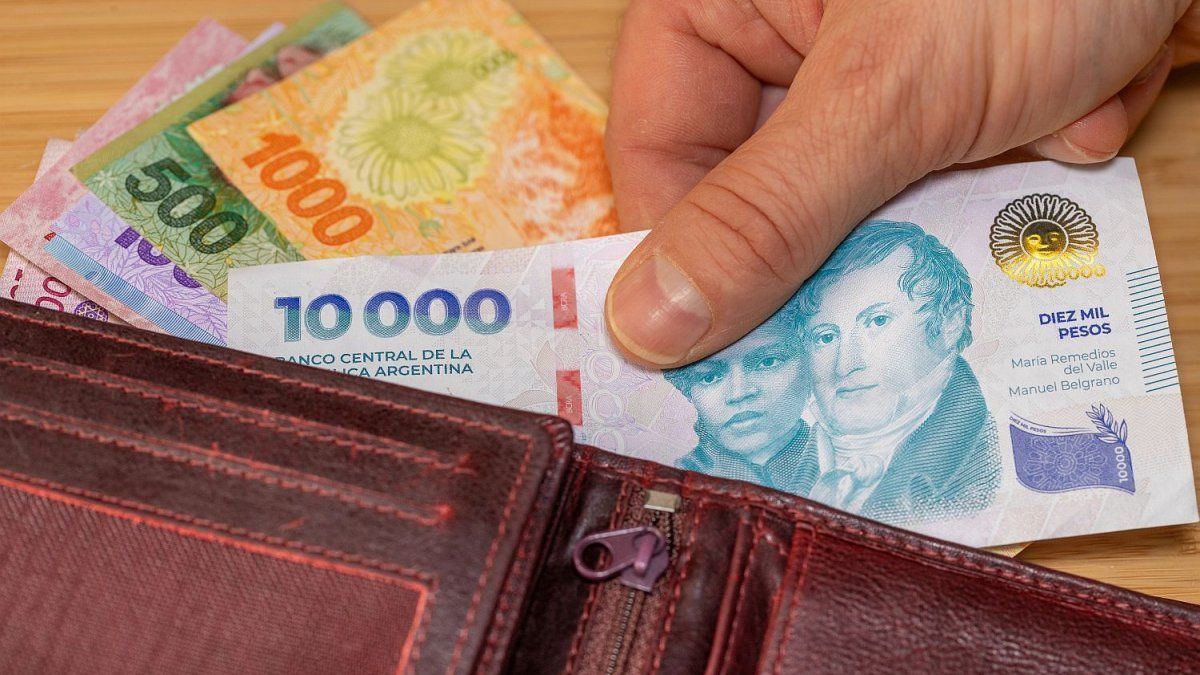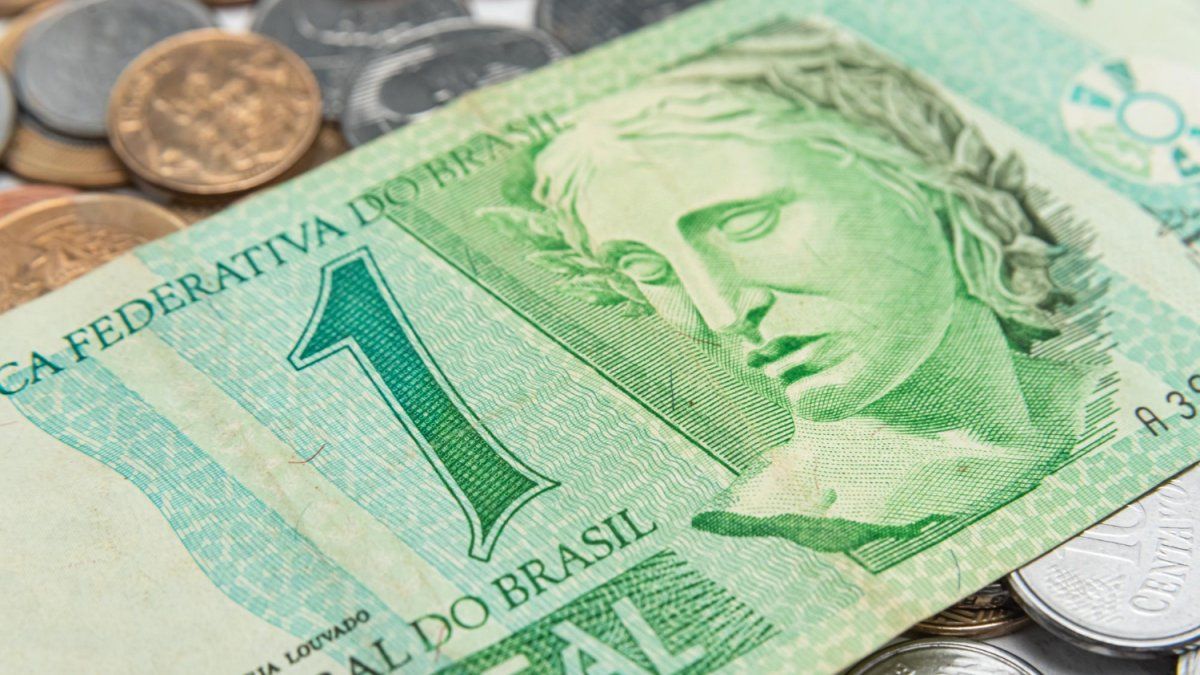The monetary base It is the sum of all the money in circulation, that is, bills and coins, plus the banks’ reserves and the instruments in pesos that they have in the monetary regulator. It is controlled by the monetary authority of a country and today, in Argentina, policy is very contractionary. So, The fall in the price of parallel dollars is due, to a large extent, to the fact that there is more supply due to money laundering and less demand because there is no flow of local currency.
“The Government, in some way, set the broad monetary base, which considers the Liquidity Fiscal Letters (LEFI), plus deposits, at $47.7 trillion. That means that the money is limited to that dynamic. The banks show a certain tendency to dismantle the LEFIs to go to reserve requirements and the ‘roll over’ of the Government’s debt, which is below 100% in recent times, and that reflects the need for greater liquidity,” says the economist. Salvador Vitelli, of Romano Group, to Scope.
“There is a real reduction in the monetary base and in the pesos in the economy. We see a contractionary policy that aims to calm the escalation of prices. The recession and the monetary policy that lowers emissions lowers prices aims to lower inflation and, in this way, less funds are allocated to the economy,” Martín Kalos, director of Epyca Consultores, tells Ámbito.
The reduction of the monetary base and the zero emission objective
Vitelli clarifies that “It is not a very strong monetary squeeze, but the banks are beginning to lend more and need more reserve requirements,” that on the one hand. In addition, the circulation grows very slowly in recent times. “What rises the most are reserves, which increase due to the disarmament of LEFIs,” he says.
It is worth mentioning that, until November 5which is the latest data available from the BCRA, The monetary base was $26,160 millionalmost two and a half times higher than that of a year before, when it was $7,694 million. However, it fell, in real terms -1.2% in October and decreased by a similar level in September, but, even so, in the interannual comparison it grew in real terms 10.6% (that is, if inflation is discounted of that period).
So, as explained the economist of the Development Research Foundation (FIDE), Pedro Gaite, “there is a lack of pesos and this has to do with the monetary policy that they say aims to move towards zero emissions” and although he points out that this path is not entirely real because it is too ambitious, he does say that “many emission taps were closed and “There is a monetary squeeze, which is reflected in the data published by the BCRA.”
WhatsApp Image 2024-11-12 at 08.38.48.jpeg
This is the evolution of the LEFI.
Gaite indicates that ““The injection of liquidity by the Government is very low and this has an impact on there being fewer pesos that go to the dollar,” However, the greater need for local currency, which is scarcer, also affects the fall in the exchange rate. Likewise, the greater need for Argentine banknotes also has to do with the change in expectations, which, hand in hand with the drop in the dollar, generated a “carry trade”, which leads to the drop seen in the price of interest rates. “parallel exchange rates”.
It is worth remembering that The financial markets lost almost 7% (both the MEP and the CCL) in October and both maintained the trend in the first week of November. This is a consequence of the BCRA’s purchases in the official exchange market and disinflationary expectations, as well as the money laundering that injects foreign currency into the market. On the other hand, blue is following in their footsteps and lost 3.64% of its value last month, a trajectory it followed in the first days of November.
“The lack of pesos is a crucial part of the objective of the Government’s monetary policywhich is precisely to revalue it. The fewer pesos, the more your purchasing power grows, and that is why we are witnessing a decrease in inflation below 3% per month. The counterpart is reflected in the exchange market and the inability of people to purchase, that is, their demand drops and the price falls,” explains Horacio Miguel Arana, economist at the International Bases Foundation.
The effect of the lack of pesos on the dollar
He also points out that the decrease in financial dollars, anchored in a contractionary monetary policy, is also influenced by transitory factors, such as money laundering, Trump’s victory in the US or the agreement with international credit organizations such as the World Bank (WB) and the Inter-American Development Bank (IDB).
It is worth mentioning that this fall of the parallel dollar also is stimulated by inflation projections, which are reflected in the booming demand for financial instruments in pesos, with the Lecaps curve already below 3% monthly. In this context, the BCRA ordered its last reduction in the monetary policy rate last week, taking it from 40% to 35%.
Thus, an element is added to explain the shortage of pesos in the economy: is also associated with an increase in loanswhich will have even more momentum as a result of the new lowering of the monetary policy rate. “In the banks, credits in pesos increased sharply and that reduced liquidity even more, especially when taken against deposits in the same currency. Even before the last drop, the banks were paying a higher rate to obtain liquidity” , says economist Lorenzo Sigaut Gravina to this medium.
Explain that many financial entities do not have as many Liquidity Fiscal Letters (LEFIs) in their possession, so they cannot obtain liquidity through that instrument and have to request active repos from the BCRA or go out to look for more fixed terms with a better rate.
The Anker point by Luis Caputo
For the economist Federico Glustein“we are at the Anker point that the Minister of Economy, Luis Caputo, spoke of”, with bank liquidity in the order of 38%, which results in a shortage of pesos to obtain dollars and that puts downward pressure on the rate. parallel exchange rate and that is combined with the drop in the interest rate.
Added to this, There was greater demand for foreign currency due to imports and payments for these are in the order of 90%, which in some way stabilizes the exchange market.. “The banks, in turn, lend to the private sector and need pesos that attract them with the rise in fixed-term rates, but the pesos should also drive the incipient recovery,” he says.
And Glustein considers that, since there is no issue, the wheel of mobility of pesos that are worth more and more will have to begin and hopes that the change of focus of the banks towards private credit will become, over the months, a sign that the economy will expand. However, going forward, Gaite warns that “the injection of liquidity by the Government is very low and, within the framework of an economy that is very slowly reactivating, more pesos will be needed.”
Source: Ambito
I’m a recent graduate of the University of Missouri with a degree in journalism. I started working as a news reporter for 24 Hours World about two years ago, and I’ve been writing articles ever since. My main focus is automotive news, but I’ve also written about politics, lifestyle, and entertainment.




